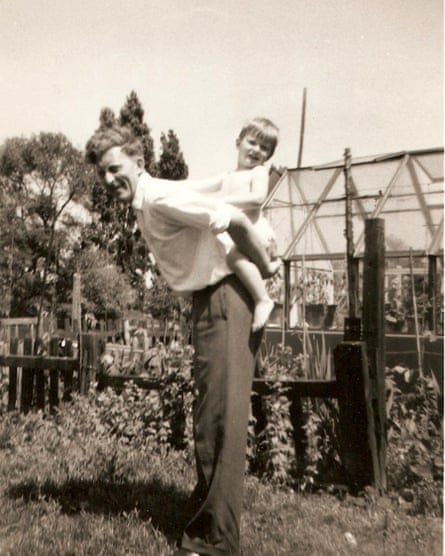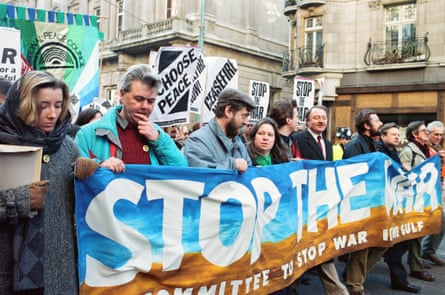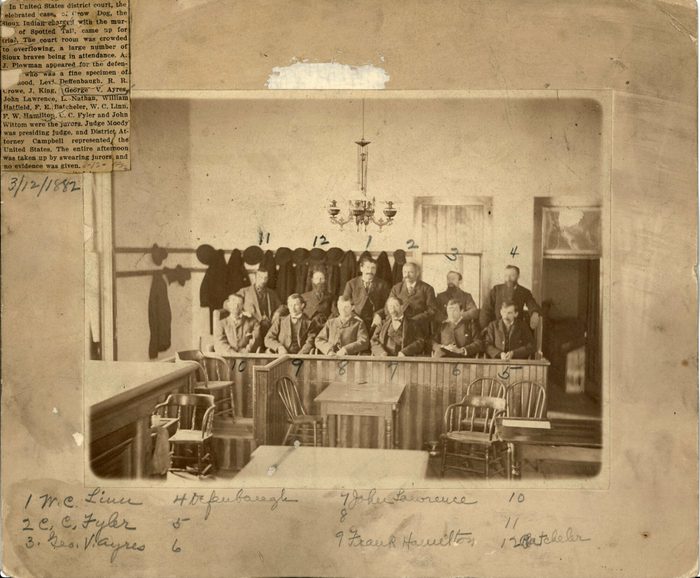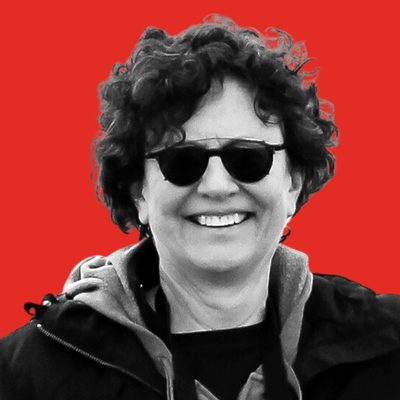U$A
Red state coal towns still power the West Coast. We can't just let them die
Sammy Roth
Los Angeles Times
Tue, April 16, 2024

The Colstrip coal plant lights up the night, generating power mostly for Oregon and Washington.
LONG READ
In the early mornng light, it's easy to mistake the towering gray mounds for an odd-looking mountain range — pale and dull and devoid of life, some pine trees and shrublands in the foreground with lazy blue skies extending up beyond the peaks.
But the mounds aren't mountains.
They're enormous piles of dirt, torn from the ground by crane-like machines called draglines to open paths to the rich coal seams beneath. And even though we're in rural southeastern Montana, more than 800 miles from the Pacific Ocean, West Coast cities are largely to blame for the destruction of this landscape.
Workers at the Rosebud Mine load coal onto a conveyor belt, which carries the planet-wrecking fuel to a power plant in the small town next door. Plant operators in Colstrip burn the coal to produce electricity, much of which is shipped by power line to homes and businesses in the Portland and Seattle areas. It's been that way for decades.
"The West Coast markets are what created this," Anne Hedges says, as we watch a dragline move dirt.

An aerial view of the coal mine outside Colstrip that feeds the town's power plant.
She sounds frustrated, and with good reason.
Hedges and her fellow Montana environmentalists were happy when Oregon and Washington passed laws requiring 100% clean energy in the next two decades. But they're furious that electric utilities in those states are planning to stick with coal for as long as the laws allow, and in some cases making deals to give away their Colstrip shares to co-owners who seem determined to keep the plant running long into the future.
"Coal is not dead yet," Hedges says. "It's still alive and well."
That's an uncomfortable reality for West Coasters critical of red-state environmental policies but not in the habit of urging their politicians to work across state lines to change them — especially when doing so might involve compromise with Republicans.
One example: California lawmakers have refused to pass bills that would make it easier to share clean electricity across the West, passing up the chance to spur renewable energy development in windy red states such as Montana and Wyoming — and to show them it's possible to create construction jobs and tax revenues with renewable energy, not just fossil fuels.
Instead, California has prioritized in-state wind and solar farms, bowing to the will of labor unions that want those jobs.
It's hard to blame Golden State politicians, and voters, for taking the easy path.
But global warming is a global problem — and whether we like it or not, the electric grid is a giant, interconnected machine. Coal plants in conservative states help fuel the ever-deadlier heat waves, fires and storms battering California and other progressive bastions. The electrons generated by those plants flow into a network of wires that keep the lights on across the American West.
Also important: Montana and other sparsely populated conservative states control two U.S. Senate seats each, and at least three electoral votes apiece in presidential elections. Additional federal support for clean energy rests partly in their hands.
Those are the practical considerations. Then there are the ethical ones.
For years, the West's biggest cities exported their emissions, building distant coal generators to fuel their explosive growth. Los Angeles looked to Delta, Utah. Phoenix turned to the Navajo Nation. Albuquerque turned to the Four Corners region.
That wave of coal plants — some still standing, some demolished — created well-paying jobs, lots of tax payments and a thriving way of life for rural towns and Native American tribes. All are now struggling to map out a future without fossil fuels.

Mule deer roam through the town of Colstrip, not far from the power plant.
What do big cities owe those towns and tribes for producing our power and living with our air and water pollution? Can we get climate change under control without putting them out of business? What's their role in the clean energy transition?
If they refuse to join the transition, how should we respond?
A team of Los Angeles Times journalists spent a week in Montana trying to answer those questions.
We explored the town of Colstrip, hearing from residents about how the coal plant and mine have made their prosperous lives possible. We talked with environmental activists who detailed the damage coal has caused, and with a fourth-generation rancher whose father fought in vain to stop the power plant from getting built — and wrote poems about his struggle.
Coal is going to die, sooner or later. For the sake of myself and other young people, I hope it's sooner.
And for the sake of places like Colstrip, I hope it's the beginning of a new chapter, not the end of the story.
Coal pays the bills. For now
For a community of 2,000 people, Colstrip doesn't lack for nice things.
The city is home to 32 public parks and a gorgeous community center, complete with child care, gym, spin classes, tanning booth and water slide. The spacious health clinic employs three nurses and two physical therapists, with a doctor coming to visit once a week. There's an artificial lake filled with Yellowstone River water and circled by a three-mile walking and biking trail.
Everybody knows where the good fortune comes from.
The high school pays homage to the source of Colstrip's wealth with the hashtag #MTCOAL emblazoned on the basketball court's sparkling floor. A sign over the entrance to campus celebrates the town's 2023 centennial: "100 Years of Colstrip. Powered by Coal, Strengthened by People."
"We have nothing to hide," Jim Atchison tells me. "We just hope that you give us a fair shake."

Jim Atchison steps out of his office in Colstrip.
I couldn't have asked for a better tour guide than Atchison, who for 22 years has lived in Colstrip and led the Southeast Montana Economic Development Corp. He's soft-spoken and meticulous, with a detailed itinerary for our day and a less ironclad allegiance to coal than many of the locals we'll meet.
They include Bill Neumiller, a former environmental engineer at the power plant. We start our day with him, watching the sun rise over the smokestacks across the lake. He moved to Colstrip 40 years ago, when the coal plant was being built. He enjoys fishing in the well-stocked lake and teaching kids about its history, in his role as president of the parks district.
The plant, he says, pays the vast majority of the city's property taxes.
"It's been a great place to raise a family," he says.
So many people have similar stories — the general manager of a local electrical contractor, the administrator of the health clinic. I especially enjoy chatting with Amber and Gary Ramsey, who have run a Subway sandwich shop here for 30 years.
"It takes us two to three hours to get through the grocery store, because you know everybody," Gary says.
He didn't plan to spend his life here. Sitting at a table at Subway, he tells us he grew up in South Dakota and went to college in North Dakota before taking a job teaching math and coaching wrestling in Colstrip. He planned to stay for a year or two.
Then he met Amber, who was working part-time as a bartender and doing payroll at the coal plant.
"Forty years later, I'm still here," he says. "We raised our kids here."

The power plant's smokestacks are visible from miles away in the town of Colstrip.
John Williams was one of the first Montana Power Co. employees to move to Colstrip, as planning for the plant's construction got started. Today he's the mayor. He's well-versed in local history, from the first coal mining in the 1920s — which supplied railroads that later switched to diesel — to the economic revitalization when the Portland and Seattle areas came calling.
Unlike many of the other Colstrip lifers who share their stories, several of Williams' kids have left town. But one of his sons lives in a part of Washington where some of the electricity comes from Colstrip. Same for another son who lives in Idaho.
It's hard for Williams to imagine a viable future for his home without the power plant.
"I believe they are intimately tied together," he says.
And what about climate change, I ask?
Nearly everyone in Colstrip has a version of the same answer: Even if it's real, it's not nearly as bad as liberals claim. And without coal power, blackouts will reign. West Coast city-dwellers don't understand how badly they need us here in Montana.
Atchison is an exception.
Yes, he's dubious about climate science. And yes, he wants to save the mine and power plant. His office is plastered with pro-coal messages — a sign that says, "Coal Pays the Bills," a magnet reading, "Prove you're against coal mining: Turn off your electricity."
But he knows the market for coal is shrinking as the nation's most populous cities and most profitable companies increasingly demand climate-friendly energy. So he's preparing for a future in which Colstrip has no choice but to start providing it.
"We have one horse in the barn now," Atchison says. "We need to add two or three more horses to the barn."

A conveyor belts carries coal from the Rosebud Mine to the Colstrip power plant.
Ever since President Obama started trying to tighten regulations on coal power, Atchison has been developing and implementing an economic diversification strategy for Colstrip. It involves expanding broadband capacity, building a business innovation center and broadening the local energy economy beyond coal. The transmission lines connecting Colstrip with the Pacific Northwest are an especially valuable asset, capable of sending huge amounts of clean electricity to the Pacific coast.
"Colstrip is evolving from a coal community into an energy community," Atchison says. "We're changing. We're not closing."
Already, Montana's biggest wind farm is shipping electricity west via the Colstrip lines. A Houston company is planning another power line that would run from Colstrip to North Dakota. Federal researchers are studying whether Colstrip's coal units could be replaced with advanced nuclear reactors, or with a gas-fired power plant capable of capturing and storing its climate pollution.
West Coast voters and politicians could speed up the evolution, for Colstrip and other coal towns. Instead of just congratulating themselves for getting out of coal, they could fund training programs and invest in clean energy projects in those towns.
They'll never fully replace the ample jobs, salaries and tax revenues currently provided by coal. But nothing lasts forever. One hundred years is a pretty good run.
Some inconvenient truths
"Great God, how we're doin'! We're rolling in dough,
As they tear and they ravage The Earth.
And nobody knows...or nobody cares...
About things of intrinsic worth."
—Wally McRae, "Things of Intrinsic Worth" (1989)
Growing up outside Colstrip in the 1970s could lead to strange moments for Clint McRae, the son of a cowboy poet.
He was a teenager then, and Montana Power Co. was working to build public support for Units 3 and 4 of the coal plant. One day his eighth-grade teacher instructed everyone who supported the new coal-fired generators to stand on one side of the classroom. Everyone opposed should stand on the other side.
McRae was the only student opposed.
"And then [the teacher] gave a lecture about how important the construction of these plants was and handed out bumper stickers that said, 'Support Colstrip Units 3 and 4,'" McRae tells me, shaking his head. "It was terribly uncomfortable."

Rancher Clint McRae was raised outside Colstrip and has followed in his father's footsteps.
Later, his mom was doing laundry and found a pro-coal bumper sticker in his pants pocket. She showed it to his cattle rancher father, Wally, "and I guess he went over there [to the school] and kicked ass and took names," McRae says with a laugh.
Fifty years later, he's carrying on his dad's legacy.
We spend a morning in the Colstrip area on McRae's sprawling ranch, admiring sandstone rock formations and herds of black angus cows. The scenery is harsh but elegant, rolling hills and pale green grasses and pink-streaked horizon lines.
"This country has a sharp edge to it," McRae says, quoting a photographer who visited the property years ago.
The land has been in his family since the 1880s, when his great-grandfather immigrated from Scotland. He hopes his youngest daughter — who recently moved back home with her husband — will be the fifth generation to raise cattle here.
"And we just had a grandchild seven months ago, and she's the sixth," he says.

Rancher Clint McRae contemplates the environmental threats facing his family's land.
McRae wears a cowboy hat and drives a pickup truck. He tells me right away that he's "not the kind of person who participates in government programs unless I absolutely have to." He's certainly got no qualms about making a living selling beef.
But McRae and his forebears defy stereotypes.
His father, Wally, not only raised cows but was also a celebrated poet, appointed by President Clinton to the National Council on the Arts. In the 1970s, he joined with other ranchers to help found Northern Plains Resource Council, an advocacy group. They were moved to act by a utility industry plan for nearly two dozen coal plants between Colstrip and Gillette, Wyo.
"I and others like me will not allow our land to be destroyed merely because it is convenient for the coal company to tear it up," Wally McRae said, as quoted in a 50th-anniversary book published by Northern Plains.
Now in his late 80s and retired from the ranch, Wally's got every reason to be proud of his son.
Clint has fought to limit pollution from the coal plant his dad couldn't stop — and to ensure the cleanup of dangerous chemicals already emitted by the plant and mine. He's written articles calling for stronger regulation of coal waste, and slamming laws that critics say would let coal companies pollute water with impunity. Like his father, he's a member of Northern Plains.
McRae wants me to know that even though he and his dad "damn sure have a difference of opinion" with many of the people who live in town, "it was never personal." The coal-plant employees are friends of his. He doesn't want them to lose their jobs.
"Our kids went to school together, played sports together," he says.

Rancher Clint McRae opens a gate on his family's land outside Colstrip.
But even though McRae believes "we can have it both ways" — coal generation coupled with environmental protection — he's not optimistic. And history suggests he's right to be skeptical. Various analyses have found rampant groundwater contamination from coal plants, including Colstrip. Air pollution is another deadly concern. A peer-reviewed study last year estimated that fine-particle emissions from coal plants killed 460,000 Americans between 1999 and 2020.
Then there's the climate crisis.
McRae doesn't want to talk about global warming — "that's not my bag," he says. But he's seen firsthand what it can look like.
In August 2021, the Richard Spring fire tore across 171,000 acres, devastating much of his ranch and nearly torching both of his family's houses. He was on the front lines of the fast-moving blaze as part of the local volunteer firefighting crew. Temperatures topped 100 degrees, adding to the strain of dry conditions and fierce winds. McRae had never seen anything like it.
Two and a half years later, he's still building back up his cattle numbers and letting the grass regrow.
"It burned all of our hay. It was awful," he says.
McRae has a strong sense of history. As we drive toward the Tongue River, which forms a boundary of his ranch, he points out where members of the Arapaho, Lakota Sioux and Northern Cheyenne tribes camped before the Battle of the Little Bighorn in 1876, a few years ahead of his great-grandfather's arrival in Montana. A few minutes later he stops to show off a series of tipi rings — artifacts of Indigenous life that he's promised local tribes he'll protect.
McRae is acutely aware that this wasn't always ranchland — and that it probably won't be forever.
"It's gonna change," he says. "Whether we embrace it or not."
The wind and the water
Sturgeon. Bubbles. Salamander. Jimmy Neutron.
Those are "call signs" for some of the 13 employees at the Clearwater wind farm, where 131 turbines are spread across 94 square miles of Montana ranchland a few hours north of Colstrip. The nicknames are scrawled on a whiteboard in the trailer office.
Raptor. Goose. Sandman.
Clearly, they have fun here. And it's an industry where you can make good money.

Turbines spin at sundown at NextEra Energy's Clearwater wind farm, which sends power from Montana to Oregon and Washington.
Clearwater's operator, Florida-based NextEra Energy, won't disclose a salary range. But as of 2022, the median annual wage for a U.S. wind turbine technician working in electric power was $59,890, compared with $46,310 for all occupations nationally.
"If someone wants to stay close to home and still have a good career, we provide them that opportunity," Alex Vineyard says.
Vineyard lives in nearby Miles City and manages Clearwater for NextEra, America's largest renewable energy company. Clad in a hard hat, sweater vest and orange work gloves, he drives to a nearby turbine and walks up a staircase to show us the machinery inside. The tower is 374 feet high, meaning the tips of the blades reach 582 feet into the air.
Not far from here, hundreds of construction laborers are finishing the next two phases of the Clearwater project.

Alex Vineyard manages the Clearwater wind farm for NextEra, America's largest renewable energy company.
"You can see where we build wind sites. It's not downtown L.A.," Vineyard says, the sunset casting a brilliant orange glow behind him. "Generally it's rural areas — and there are limited opportunities for kids in those areas. Not a lot of great careers."
Wind will never replace coal. The construction jobs are temporary, the permanent jobs far fewer.
But they're better than nothing. A lot better.
As much as West Coast megacities owe it to coal towns like Colstrip to bring them along for the clean energy ride, coal towns like Colstrip owe it to themselves to take what they can get — and not let stubbornness or politics condemn them to oblivion.
Fortunately, they've got the power grid on their side.
In today's highly regulated, thoroughly litigated world, long-distance power lines are incredibly hard to build. They can take years if not decades to secure all the necessary approvals — if they can get those approvals at all. As a result, wind and solar developers prize existing transmission lines, like those built to carry power from Colstrip and other coal plants to big cities.
The Clearwater wind farm offers a telling case study.
Two of Colstrip's four coal units shut down in 2020 due to poor economics, opening up precious space on the plant's power lines. That open space made it easier for NextEra to sign contracts to sell hundreds of megawatts of wind power to two of Colstrip's co-owners, Portland General Electric and Puget Sound Energy — and thus get Clearwater built.

An electrical substation flanks the Colstrip power plant.
Montana wind is especially useful for Oregon and Washington because it blows strongest during winter, when those states need lots of energy to stay warm. On that front, Clearwater has been a huge success. During its first winter, it had a capacity factor of 60%, meaning it produced 60% of all the power it could possibly produce, if there were enough wind 24/7.
Sixty percent is a lot — "like a home run," Puget Sound Energy executive Ron Roberts says.
He and his colleagues want more. Puget Sound plans to build more Montana wind turbines to serve its Washington customers — again taking advantage of the Colstrip power lines.
West Coast states need to keep investing in exactly this type of project if they hope to persuade their conservative neighbors to stop fighting to save coal. The more they can bring the benefits of wind and solar power to the rest of the West, the better.
And what about those low-wind, cloudy days when wind turbines and solar panels aren't enough to avoid blackouts?
Carl Borgquist has a plan for that.
I meet up with him near Gordon Butte — a flat-topped landmass that juts up 1,025 feet from the floor of Montana's Musselshell River valley, four hours west of Colstrip but just over five miles from the coal plant's power lines. There are already wind turbines atop the butte, built by the landowning Galt family with Borgquist's help.
Borgquist assures me as we drive to the top that I'll soon understand why this steep butte is perfect for energy storage.
"It will intuitively make sense, the elegance and simplicity of gravity as a storage medium," he says.

Carl Borgquist admires the views from atop Gordon Butte, where he's got plans for a pumped storage project to augment Montana wind power.
There will be two reservoirs — one up on the butte, another 1,000 feet below. They'll be filled with water from a nearby creek.
During times of day when there's extra power on the Western electric grid — maybe temperatures are moderate in Portland and Seattle, but Montana winds are blowing strong — the Gordon Butte project will use that extra juice to pump water uphill, from the lower reservoir to the upper reservoir. During times of day when the grid needs more power — maybe there's a record heat wave, and not enough wind to go around — Gordon Butte will let water flow downhill, generating electricity.
It's called pumped storage, and it's not a new concept. But compared with other proposals across the parched West, this one is almost miraculously noncontroversial. No environmentalists making hay over water use. No nearby residents crying foul.
Borgquist still needs to sign up a utility customer, or he would have already flipped Gordon Butte to a developer better suited to build the $1.5-billion project, which will employ 300 to 500 people during construction. But Borgquist is confident that before too long, one or two of the Pacific Northwest electric utilities preparing to ditch Colstrip will see the light.
"I've been waiting for the market to catch up to me," he says.
Let's hope it catches up soon. Because even though pumped storage won't keep us heated and cooled and well-lit every hour of every day, neither will wind, or solar, or batteries, or anything else. No one technology will solve all our climate problems.
The sooner we learn that lesson, the sooner we can move on to the hard part.
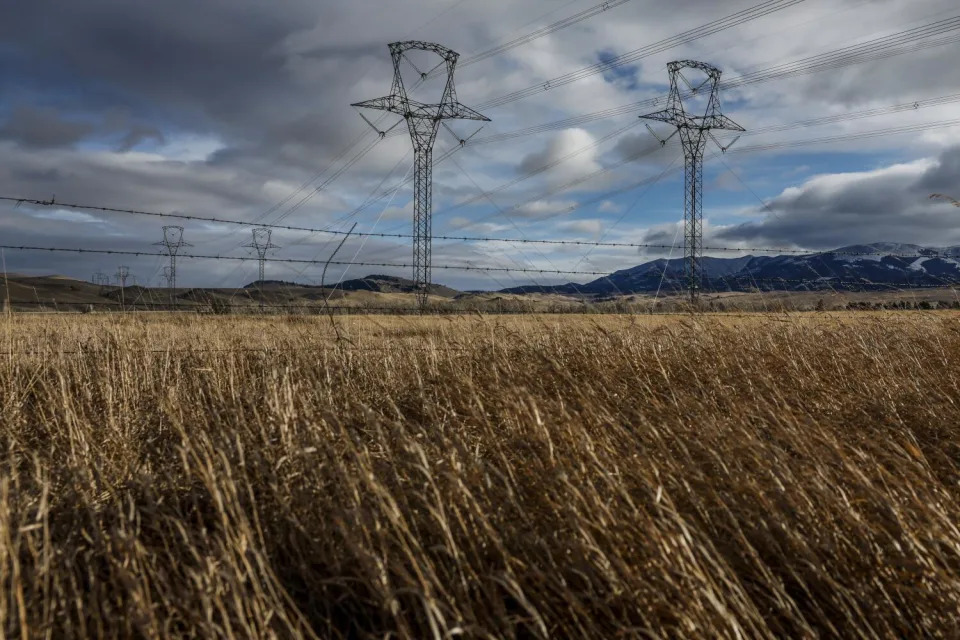
The Colstrip power lines run near Gordon Butte, carrying coal-fired electricity — and increasingly wind energy — from Montana to Oregon and Washington.
The art of the deal
I find myself wandering the halls of the state Capitol in Helena. Christmas is a few weeks away, and there's a spectacular tree beneath the massive dome, flanked by murals of white settlers and Indigenous Americans.
On a whim, I step into Gov. Greg Gianforte's office and ask if he's in. Gianforte has fought to keep the Colstrip plant open, and I want to ask him about it. I'm also curious to meet a man who easily won election despite having assaulted a journalist.
One of his representatives takes down my contact info. I never get an interview.
Despite the state's deep-red turn in recent years, Montanans have a history of environmental consciousness, owing to their love of fishing, hunting and the great outdoors (as seen in the film "A River Runs Through It"). They approved a new state constitution in 1972 that enshrined the right to a "clean and healthful environment in Montana for present and future generations."
To the frustration of Gianforte and his supporters, that right may include a stable climate.
This time last year, a Montana judge revoked the permit for a gas-fired power plant being built by the state's largest electric utility, NorthWestern Energy, along the banks of the Yellowstone River. The judge ruled that the state agency charged with approving the gas plant had failed to consider how the facility's heat-trapping carbon emissions would contribute to the climate crisis.
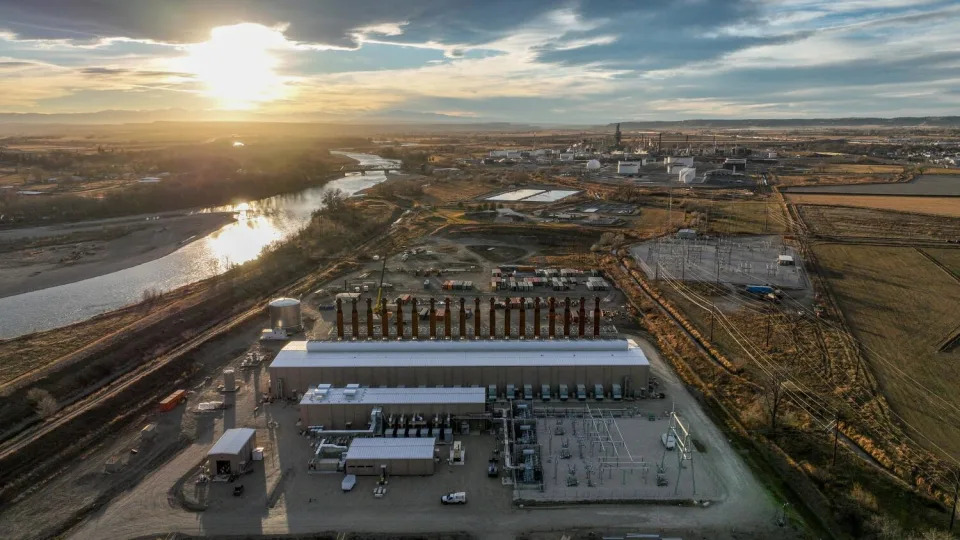
NorthWestern Energy says this gas-fired power plant on the Yellowstone River is needed to help keep the lights on for homes and businesses.
Legislators responded by rushing to pass a law that barred state agencies from considering climate impacts.
The Yellowstone River gas plant moved forward, but the law didn't last long. A few months after it passed, another judge ruled in favor of 16 young people suing the state over global warming, agreeing that the legislation violated their constitutional right to a clean and healthful environment.
"This is such a solvable problem," says Hedges, the Montana environmentalist critical of coal mining. "It's just that nobody wants to solve it."
Hedges is a leader of the Montana Environmental Information Center, where she's spent three decades battling for clean air, clean water and a healthy climate. It was her advocacy group, along with the Sierra Club, that sued Montana over the state's approval of the Yellowstone River gas plant, setting off the chain of increasingly consequential court rulings.
But as mad as she is at Gianforte — and at the local utility company executives who insist they need coal to keep the lights on in Montana — Hedges is at her most caustic when discussing the Pacific Northwest environmentalists who, in her view, have failed to do everything they can to get the Colstrip power plant shut down.
That includes the Sierra Club, which, Hedges says, has shifted its focus too quickly from shutting down coal plants to blocking the construction of new gas plants — even in places such as Montana, where coal, the dirtiest fossil fuel, isn't dead yet.
Hedges' frustration also includes the Washington state lawmakers who passed a much-lauded bill, signed by Gov. Jay Inslee, requiring electric utilities to stop buying coal power by 2025 — only to sit idly by as some of those utilities then made arrangements to give away their shares in the Colstrip plant to coal-friendly co-owners rather than negotiate agreements to shut the coal units.
"So they're not actually decreasing carbon dioxide emissions even a little tiny bit. They are allowing this plant to continue, instead of using their vote to close this source of pollution. It's maddening," Hedges says.

A lone tumbleweed blows through piles of coal at the Rosebud Mine outside Colstrip, a few miles from the power plant. Coal is prepped for transport at the mine. Coal is transferred to a truck at the mine.
Washington officials say they tried to get Colstrip shut down but were stymied by the plant's complicated six-company ownership structure, and by the Montana Legislature's staunch support for coal. Sierra Club activists, meanwhile, say they're still pushing for Colstrip's closure, and for coal shutdowns across the country — even as they also oppose the construction of gas plants.
"From a climate perspective, gas is just as bad as coal," says Laurie Williams, director of the Sierra Club's Beyond Coal campaign.
To avoid a future of ever-more-dangerous fires, floods and heat, we need to ditch both fossil fuels — fast.
This is the hard part. This is the part that will require compromise — for conservatives who believe anything smacking of climate change is woke liberal propaganda, and for liberals who want nothing to do with conservatives spouting that belief.
So how do we do it? How do we stop clashing and start cooperating?
First off, West Coasters need to engage in good faith with the people who have supplied their power for decades — and strike deals that might persuade those red staters to move on from coal. Deals like building more wind farms in Montana and not as many back home, even if that means fewer union jobs and lower tax revenues for California, Oregon and Washington.
It's great that the coastal states are targeting 100% clean energy, but it's not enough. They must bring the rest of the West along for the ride, or it won't matter. Every solar farm in California is undermined by every ton of coal burned at Colstrip.
The lesson for folks who live in Colstrip and other Western coal towns, might be even more difficult to swallow.
L.A. and Phoenix and Portland have funded your comfortable lifestyles a long time. Now they want something different.
If Colstrip wants to stick around, it needs to start offering something different.

Climate activist Anne Hedges stands in a public park near the Colstrip power plant.
It's easy to see why that's a scary prospect. After we finish exploring the coal mine with Hedges, we drive into town and stop at one of the immaculately maintained public parks. The power plant's two active smokestacks aren't far, looming 692 feet over a swing set and red-and-blue bench with the letters "USA" carved into the backing.
"The climate doesn't care who owns the power plant," Hedges says, as steam and carbon and soot spew from the stacks.
The climate won't care any more when Houston-based Talen Energy — which operates the plant, and which didn't respond to requests for a tour or interview — becomes the facility's largest owner next year, acquiring Puget Sound Energy's shares.
Our ability to solve this problem doesn't depend on which company is profiting off all that coal.
What it does depend on is our willingness to make hard choices, ranchers and miners and activists setting aside their differences and writing the West's next chapter together, rather than fighting so long and so hard that the tale ends badly for everyone.
Change is scary. But it's inevitable. Cowboy poet Wally McRae learned that the hard way.
Maybe 50 years from now, his great-grandchildren will wax poetic about the beauty of Colstrip without coal.

The early-morning sky glows red over the town of Colstrip.
(PHOTOS: Robert Gauthier / Los Angeles Times)
This story originally appeared in Los Angeles Times.



